Reviving Overcrowded Poor Performing Perennials
- horticulturist and gardening expertSeptember 8, 2018
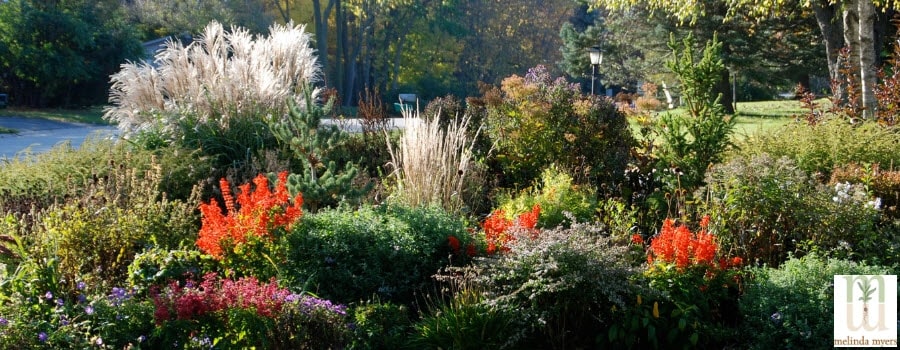 I don’t know about you, but I am still busy weeding, mulching and working to keep my gardens looking their best. As I work my way through my garden beds and mixed borders I am finding some of my perennials are not performing as well as I would like. A few are not flowering, some are flopping and a couple of plants look like donuts with healthy growth surrounding dead centers. And then there are those that grew larger than expected, not that I planted them too close together.
I don’t know about you, but I am still busy weeding, mulching and working to keep my gardens looking their best. As I work my way through my garden beds and mixed borders I am finding some of my perennials are not performing as well as I would like. A few are not flowering, some are flopping and a couple of plants look like donuts with healthy growth surrounding dead centers. And then there are those that grew larger than expected, not that I planted them too close together.
If you noticed any of this in your landscape, it is time for a bit of digging, dividing and in some cases transplanting. All you need is a bit of time, a sharp shovel, linoleum knife or drywall saw and time.
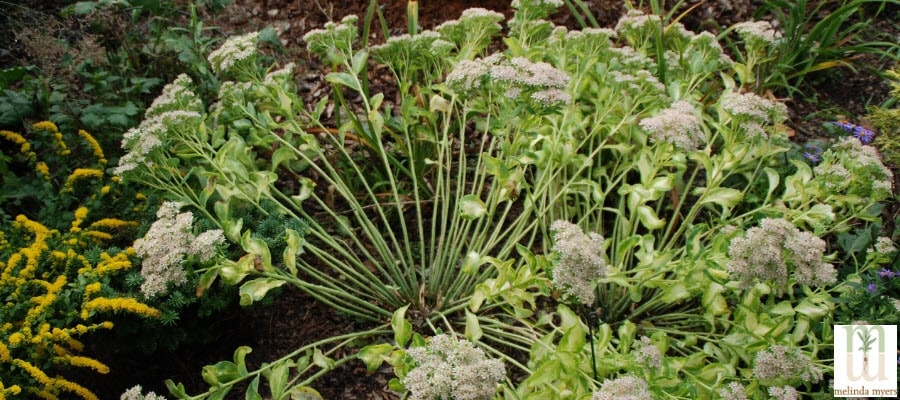
Above: Sedum with an open center
Fall is the best time to divide spring and summer blooming perennials. Wait until spring to dig and divide fall or summer blooming perennials not moved the previous fall. But most gardeners have found the best time to divide is when you have the time and can provide good proper post-transplanting care. I have pushed the limits and have had more successes than failures. I consider this part of stress testing so I can help you with your gardening endeavors.
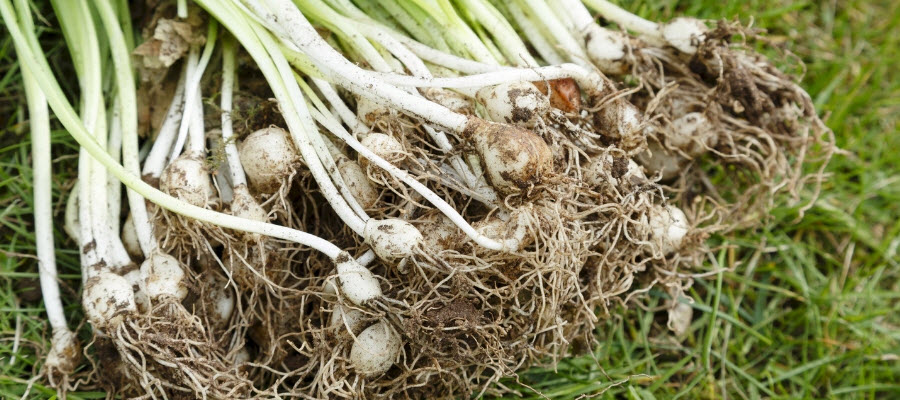
Above: A clump of SnowDrops
Start by sharpening the cutting edge of your shovel. A sharp-edged shovel makes digging and cutting through plant roots and soil much easier. Dig the failing perennial, roots and all, out of the ground. I like to lift the clump out of the soil and use a linoleum, garden knife or drywall saw to cut the plant into smaller sections.
Some gardeners prefer to use two garden forks placed back to back in the center of the clump and pry the perennial apart into two pieces. They continue the process until they have the desired size and number of divisions. I am not as coordinated as these gardeners and end up with a mess instead of a neatly divided plant.
Discard and compost the dead center. Divide the remaining plant into four, six or eight pieces. The smaller the divisions the longer it will take for it to reach mature size. Larger divisions may quickly grow, fill the space and need to be divided sooner.
You can plant one of the divisions back into its original location. Use the others to fill voids, expand existing gardens or start a new bed or border. Just make sure to match the plant with its desired growing conditions. And do not share divisions dug from jumping worm-infested soil to friends or neighbors’ gardens. This is one way this invasive worm has spread.
Prepare the soil. No matter how you plan on using the divisions you should prepare the soil first. Add compost, peat moss or other organic matter to the top 8 to 12 inches of soil. Then make a note to fertilize new transplants and existing perennials with Milorganite next spring. The slow release low nitrogen formulation won’t damage new plantings or interfere with flowering. Plus it contains 85% organic matter that helps improve the soil.
Plant the divisions at the same depth they were growing in the garden. Water thoroughly at planting and throughout the fall or subsequent growing season whenever the top few inches of soil are starting to dry. Spread a layer of shredded leaves, evergreen needles or other organic mulch over the soil surface. Be careful not to bury the stems. Mulch helps moderate soil temperatures, conserves moisture, suppresses weeds and improves the soil as it breaks down.
Continue to weed your gardens. These unwanted plants compete with new divisions and existing perennials for water and nutrients. Plus they can attract and harbor insects and diseases that can harm your perennials.
Pulling weeds is also a great way to burn calories and reduce frustration. And if you don’t agree, keep in mind every weed you remove now means at least one if not a hundred or more less to dig next season. I find this makes weeding much more tolerable.
Regular dividing can also help eliminate other garden tasks like deadheading, staking, and replacement. Divide repeat blooming daylilies every few years to keep them blooming throughout the season. Do the same for threadleaf coreopsis. You’ll keep this perennial blooming without the need to deadhead, remove faded flowers. I would much rather dig and divide a plant every few years rather than deadheading those small flowers for even one season.
Lend borderline hardy ornamental grasses that suffered winter damage a helping hand. These often have just a few sprouts growing from the original clump. Take a sharp shovel or other tool to cut through the clump and roots in a crisscross fashion. This invigorates the plant and it will emerge nice and full the following season.
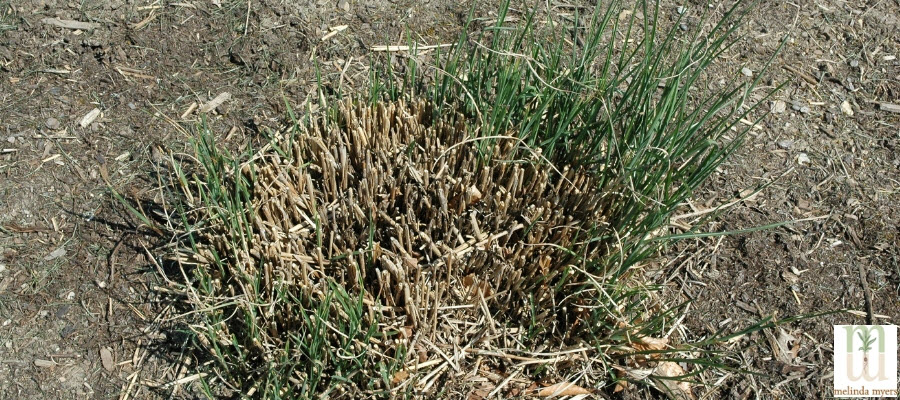
Above: Miscanthus sinensis graziella (ornamental grass)
Divide asters every year or two in the spring to keep them vigorous and control their spread as needed. Increase the vigor and compactness of Shasta daisies by dividing them every 2 to 3 years. Make sure the soil is well-drained as Shasta daisies do not tolerate wet soil in the winter.
Peonies on the other hand seldom need dividing. They can remain in the ground undisturbed and blooming profusely for decades. Fall is the time to dig and divide peonies you need to move or want to propagate.
Wait for the peony leaves to yellow or be killed by frost before digging in. Dig a hole large enough to accommodate the roots. Place the rhizome, that’s the swollen underground stem, so it is no more than 1 to 2 inches below the soil surface. Planting too deep can prevent peonies from flowering.
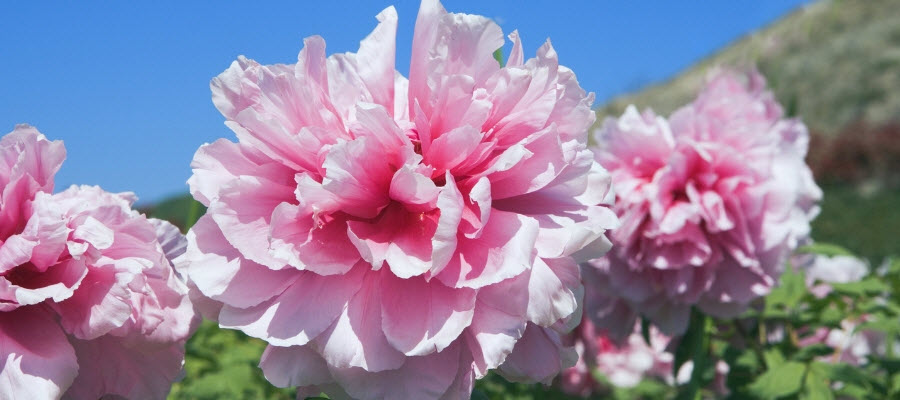
Above: Pink Peonies
Don't be alarmed if your peony or other perennials fail to bloom the year following transplanting. The transplant often spends the first year establishing a healthy root system instead of flowering. Good for the plant but frustrating for us. The old saying “the first year they sleep, next year they creep and the third year they leap” certainly applies here. Just be patient and you will be rewarded with flowers the following year.
So, take some time to view and evaluate your garden beds and borders. Take advantage of the warm soil and cool air of fall to dig, divide and transplant overcrowded and struggling perennials. Your efforts will be rewarded with better looking and more floriferous gardens.

